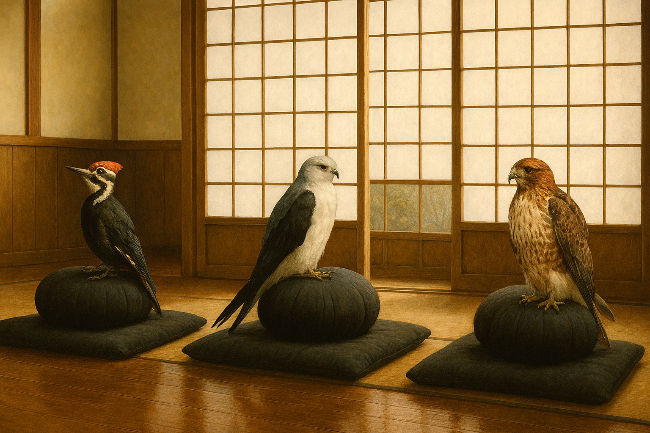Hope is the Thing with Feathers
- Dr. Nicole Becich
- Jan 3, 2023
- 3 min read
Guest Blogger: Dr. Nicole Becich*
Adapted from the original publication for the Association of Avian Veterinarians
December, 2022.

Pictured: Two Javan kingfisher (Halcyon cyanoventris) perched on rotten wood in a bush. By I Wayan Sumatika | Adobe Stock.
Poem: "Hope is a Thing with Feathers" by Emily Dickenson
Many people have opinions about how effective messages of hope are in the face of all that the world is up against these days. Climate change, consumerism, epidemics and pandemics plague us and the species we care about most - it’s easy to get cynical, burnt out, and discouraged. Great naturalists of our time, such as Jane Goodall, David Attenborough, and Edward O. Wilson have championed the notion that education, great messages of hope, and optimism are crucial in our shared fight to save natural places. Certainly, money, power, and legislation are the true forces of change in many of our modern cultures, but we don’t get people involved in those heavy-lifting activities without lighting their fires from within.
I was gifted two books this holiday season, The Book of Hope: A Survival Guide for Trying Times by Douglas Carlton Abrams and Jane Goodall, and An Immense World by Ed Yong - I hope to get to them soon to keep that fire burning for myself. As one of my favorite writers and ecologists Aldo Leopold once wrote- “... I have no hope for conservation born of fear.” And there is, unfortunately, a lot of loss of life, a lot of suffering, and a lot of scary things out there that are easy to fear. I was told by two of my greatest college mentors in my ecology program that to work in conservation, one has to have optimal ignorance (of the battles that we may lose, and the people who work hard against us), and terminal optimism to remain passionate in our efforts to help the world we live in and share. I hope to continue to take those messages to heart.
I will leave you with a tale of wonder and myth from birds: have you ever heard the term “Halcyon”? Halcyon as an adjective “denotes a time in the past that was idyllically happy and peaceful” - but it has its roots in Greek mythology. It comes from an old love story between Ceyx, the Morning Star, and Halcyon, daughter of Aeolus, God of the Winds. After the death of Ceyx in the dark of winter, the gods transformed the two lovers into Kingfishers, to nest upon the sea at solstice each year. Sailors often thanked the “Halcyon” birds - which became mythical symbols in themselves - for peaceful waves and a calm, dark Aegean sea seven days before and after solstice, a respite from the typical harsh waters of winter. Halcyon is now an entire genus of kingfishers spread from Africa to Southeast Asia, including the strikingly colorful Javan Kingfisher, Halcyon cyanoventris (pictured above). Many birds have stories like these to capture the imagination and inspire love and action to protect them. We can learn them, tell them, and take heart from the many ways birds ignite the human imagination and spirit.
As the South African forest conservationist Baba Dioum stated, “In the end, we will conserve only what we love; we will love only what we understand and we will understand only what we are taught.” Keep teaching those around you to love the world and the birds in it. Messages of hope keep us warm in dark times.
*Nicole Becich graduated with a B.A. in Biology in 2013 from Pomona College, and is a 2018 graduate of Tufts Veterinary School. She has had the privilege of working in zoo and wildlife conservation medicine with Bioparque Amaru in Cuenca, Ecuador since 2013, where she works against wildlife trafficking and for Andean Condor conservation efforts. Thanks to her Ecuadorian colleagues she speaks passable Spanish. She currently works as an associate veterinarian at Oasis Veterinary Hospital in Martinez, California, and as a relief veterinarian at the International Bird Rescue Center in Fairfield, CA. Contact: nbecich@gmail.com




Comments